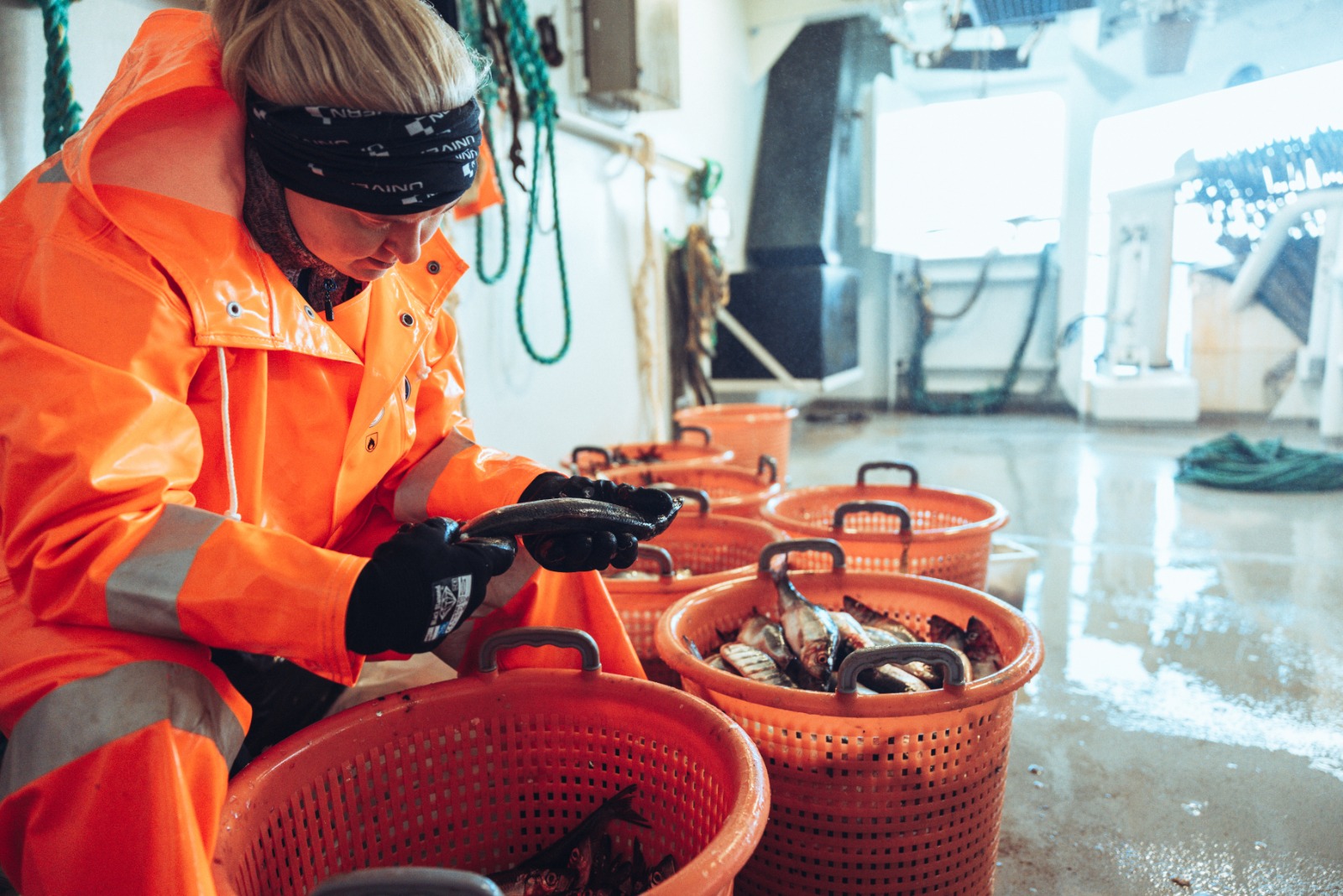New species of Ichthyophonus parasite discovered
This is what a herring fungus-infected mackerel kidney can look like under the microscope.
Photo: Julia Storesund / IMRPublished: 27.10.2022 Updated: 22.12.2022
In spite of its Norwegian name – herring fungus – Ichthyophonus is a parasite, and not a fungus.
“It looks like a fungus and makes large, spore-like structures in the fish. That is why for a long time scientists believed that it was closely related to fungi, but that is not the case”, says marine scientist Julia Storesund.
Genetic analyses have subsequently shown that “herring fungus” belongs to a group of parasites called Ichthyosporea.
New species of parasite discovered
A new study has now shed more light on the parasite. At the laboratories of the Institute of Marine Research (IMR), Master’s student Caroline da Silva Nylund recently cultivated the fungus-like parasite from both mackerel and herring. Then scientists studied the appearance of the parasite under a microscope and performed genetic analyses.
Conclusion: The variety of Ichthyophonus in mackerel is most likely a different species from the one found in herring.
“We have discovered that the Ichthyophonus in mackerel must be a new species. It has been observed before, but at the time it was thought to be ‘normal’ Ichthyophonus”, says Storesund.
These findings have recently been published in the Journal of Fish Diseases.
The official name of the new parasite will be published in a separate scientific paper at a later date.
Dangerous to herring
Ichthyophonus was first described when it was found in rainbow trout in Germany at the end of the 19th century. In Norway, the parasite’s common name reflects the fact that it was generally found in herring.
“In our country, there have been some major outbreaks of this parasite in herring, resulting in large quantities of dead herring floating ashore”, says Storesund.
When herring are heavily infected with Ichthyophonus, it is easy to see that the fish are sick. They become very thin, and they may develop spinal deformities and lesions towards the back of their bodies.
“So Ichthyophonus can be very dangerous to herring”, she says.
But not to mackerel
In recent years, scientists have started finding high prevalences of Ichthyophonus in mackerel. This observation was first made during a survey organised by the IMR in 2019, and then again on an equivalent survey the following year. In some of the catches, most of the mackerel examined were infected with Ichthyophonus.
“We were unaware of this high prevalence in mackerel”, says Storesund.
However, unlike herring, it appears that mackerel do not suffer much harm from the parasite.
“Even if mackerel are heavily infected, it isn’t evident from their appearance”, she says.
When infected mackerel are dissected, the fish are often full of white spots on their internal organs, mainly the kidney, spleen and heart, but otherwise they look healthy.
“It seems that the mackerel cope relatively well with the parasite”, says Storesund.
However, she explains that it is not easy to discover mass fish deaths in mackerel.
“Herring float to the surface when they die, whereas mackerel sink, because they don’t have a swim bladder.”

May carry the parasite northwards
The discovery of the new species of parasite raises several questions that Storesund and her fellow researchers want to find the answers to.
“How are the species of Ichthyophonus related? We are also curious to find out whether the various types of parasite only infect a particular species of fish, or whether they can jump between different species”, says Storesund.
Moreover, mackerel are migrating further and further north, where there are many species of fish that have been exposed to the “normal” type of Ichthyophonus, and it is not known how these species will cope with the new “mackerel fungus”.
“It may potentially have an impact on species that live further north. However, there is still a lot we do not know about the life cycle of these parasites and how the various species pass from one fish to another”, says Storesund.
Reference
Storesund, Julia E., C. Da Silva Nylund, E. Karlsbakk, L. Giulietti, M. Bao, P. Cipriani og A. Levsen. «High prevalence of Ichthyophonus sp. infections in Northeast Atlantic mackerel (Scomber scombrus)». Journal of Fish Diseases (2022). Lenke: https://doi.org/10.1111/jfd.13652
